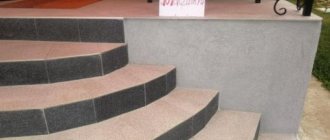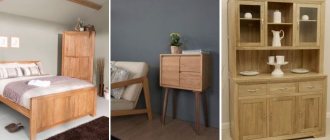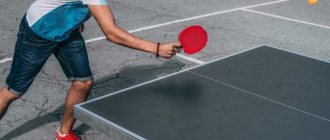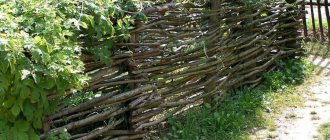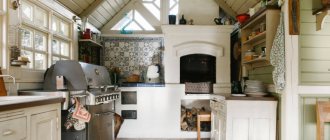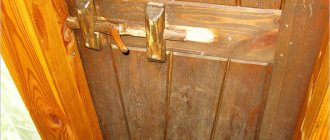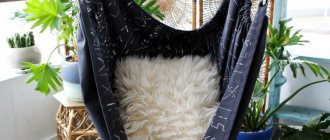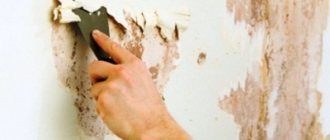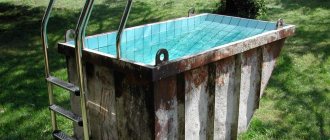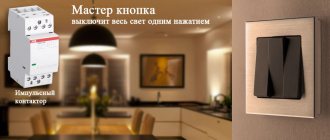The roof is an essential element for a home. After all, it is the top waterproof layer that protects the house and the materials from which it is made from the harmful effects of natural factors - be it solar radiation, rain or snow. This top layer is installed from several materials, the most popular of which is soft tiles. What are soft tiles, what types of tiles exist, and most importantly, how to choose a good and high-quality option. You can find answers to all these questions in this article.
Installation
Any decoration of the walls occurs according to a certain scheme.
It does not matter whether the interior decoration is planned or the exterior - everything must be done in compliance with the technology. For bitumen or flexible tiles it will be something like this:
- It is necessary to create a ventilation gap between the wall and the finishing material - the sheathing is installed. If you plan to insulate the facade, then the insulation is placed in the resulting cells, and a counter-lattice is placed on top.
- The resulting sheathing is sheathed with sheet material - plywood (waterproof), OSB boards or other similar ones.
- Horizontal lines are drawn on the assembled plane, which will serve as a guide for laying the slabs.
- The starting strip is being installed. The first row is special - you need to cut off the figured part from the bottom side of the tiles. It is worth starting installation by retreating 5 - 10 millimeters from the corner of the house. On the reverse side of each part there is a film covering the bitumen layer. It needs to be removed.
- The remaining parts of the covering are mounted - they will all overlap, and each element is attached not only with an adhesive layer, but also with seven to eight nails.
Door and window openings are decorated with trimmed parts. To secure their edges, special metal corners are used, decorated on the outside with basalt chips. You can choose the desired color. In the same way, the outer corners of the building are decorated with corners. At the top of window and door openings, tiles are laid overlapping metal corners to prevent water from flowing inside.
How to install it yourself
Preparatory work
1. At home, a standard set of materials and tools is selected.
2. Using plywood, OSB boards or wide boards, the base is strengthened.
3. Rafters are treated with antiseptic and fire-resistant agents.
4. A ventilation system is being installed.
For a slope greater than 25 degrees, the ventilation outlet area is 8 square meters. cm, with a smaller slope - 16 square meters. cm.
5. A bitumen cushioning layer is laid around the perimeter of the roof.
With a slope of less than 18 degrees, the gasket can only be placed in certain areas:
- in the pipe area;
- at the junction with the wall;
- on a skate;
- on eaves overhangs.
6. Cornice and pediment strips are installed.
7. The chimney outlet is marked.
8. The valley lining carpet is laid in the color of the roof.
Step-by-step instructions on how to lay it yourself
- Eaves shingles are laid on strips fixed to the eaves and nailed with galvanized nails. To save money, instead of cornice tiles, you can take ordinary tiles and cut off the petals. Then the installation is done end-to-end two centimeters from the overhang.
- Ordinary shingles are laid on both sides of the middle of the roof overhang and nailed with four nails. With a large slope, the number of nails driven can be increased to six.
- The first row should retreat from the eaves overhang by one to one and a half cm, and the petals should cover the joints of the eaves sheets.
- The second row is placed in a similar way, overlapping the cutouts of the previous row with petals.
- The edges are cut and glued, leaving a layer of up to 10 cm.
- The final rows are laid in exactly the same way - the shingles are cut to form a strip of 15 centimeters and coated with seven to eight centimeters of glue.
- Before working on the skate, the scaffolding is first prepared.
- The sheets are laid with an overlap of five centimeters and nailed with four nails. Ridge shingles are obtained by cutting the eaves along the perforations, then bending them and laying the short part along the ridge.
- Passages through the roof are made using rubber seals or special technologies: a triangular strip is installed at the junction of the roof and pipe; - lay the gasket with overlaps coated with glue; — the surface of the pipe is insulated with the calculation of covering 35 cm of the pipe and 25 cm of the slope; — a bar is installed around the perimeter; — the iron apron is fixed: — the seams are sealed with silicone sealant.
- The connection to a vertical wall is done in the same way. Only the rail is fixed along the wall, and not along the perimeter.
A properly installed roof will serve for many years, protecting the building from cold and moisture. In the absence of sufficient experience in laying soft tiles, it is better to entrust the arrangement of such an important element for a house, garage or gazebo to trained specialists. At the same time, knowledge of the instructions will allow you to control the entire process.
Installation video tutorial:
Features of installing a soft roof on the facade of a house
Odes User FORUMHOUSE
I built a frame house. The outside is covered with OSB. The roof is flexible tiles. I’m also thinking of mounting a warhead on the walls. Because Few people here do this; they have thought about the correct design and service life of such a façade.
The topic aroused great interest on the portal, and the opinions of participants were divided. Someone is in favor with both hands, considering such a facade to be original. Some are against it, believing that it is expensive and impractical, and most importantly, the tiles will soon fall off, because... “works” on the wrong vertical plane from the point of view of its installation.
An interesting experience is that of jovik2003, who was attracted by the idea of a MS on the facade due to its unusual nature. A member of the portal was not lazy and wrote a request to several manufacturers of flexible tiles, where he asked them the question: is laying soft roofing on a vertical plane allowed according to the technical regulations.
Here are the manufacturers' responses:
First company
Laying the shingles at an angle of 90 degrees is possible if you follow a number of our recommendations, namely: each shingle is nailed with at least six rough nails (in places as prescribed in the installation instructions). The petals of the shingles must be glued to the base (regardless of the ambient temperature) using a hair dryer. The thickness of the OSB board is at least 12 mm.
At the same time, the heat resistance of the heating element is up to +110 C°, so the facade will not “float” in the summer. The facade will not smell of bitumen, because... tiles contain virtually no volatile compounds or solvents.
Second company
Flexible tiles can be used to decorate the facade. The shingles are fastened with six nails per sheet, four of which are standard nails, and the other two are driven in the upper corners, at a distance of at least 2.5 cm from the edge.
So, manufacturers confirm that HF on the facade is a normal solution. You just need to install the tiles in accordance with the instructions, and if you have any questions, do not hesitate to call the company and ask for advice from specialists.
Now let's move from theory to practice.
nikitin_ilya
I am well versed in the nuances of laying flexible tiles and, based on this experience, I can give advice on their installation on the facade.
High-quality MS is sintered in the summer sun into a continuous carpet within 1 week after installation. It is important to pay attention to the modifier used in the bitumen - SBS or APP, and choose a quality product. At the initial stage, the petals of the shingles can be additionally secured with small nails or using a construction stapler.. nikitin_ilya. nikitin_ilya
nikitin_ilya
The studs or staples will eventually rust and disappear. There will not even be a trace left of them and no micro-holes either. We did this even with a negative surface slope.
- The ventilation duct in the house that Ilya built goes from the very bottom to the ridge.
Flexible tiles on the facade + lining carpet = vapor-proof finish, therefore, to remove water vapor flowing out of the house, a ventilation gap about 4 cm wide is necessary.
- The junction areas are decorated with aprons made of galvanized steel, with a pural coating in the color of the roof.
- Frame wall pie (from inside to outside):
- drywall;
- OSB;
- frame posts – board with a section of 5x15 cm + insulation – stone wool;
- counter-lattice for cross-insulation, for cutting off cold bridges - 5x5 cm block + insulation - mini-slab;
- moisture-and-windproof superdiffusion membrane;
- ventilation duct – block 5x5 cm;
- OSB;
- waterproofing in especially critical places (waterproofing carpet under the head);
- flexible tiles.
Vzik FORUMHOUSE user
I decorated the guest house GC. The “pie” is ordinary, as when installing a roof on a roof: OSB, frame with insulation, ventilation gap along the sheathing, OSB, flexible tiles. I don’t see any shortcomings in such a façade. The house is warm, dry and quiet.
A member of the portal with the nickname PETR2222 also finished his frame house with GC, because... believes that it is fast, practical and beautiful
The user advises to make sure to make a ventilation gap, pay special attention to the junction points of the main parts - windows, corners, at least hammer in as many nails as the manufacturers advise, and heat the petals with a hair dryer
PETR2222
In my opinion, the facade made of flexible tiles looks very good and original, especially when viewed from the side. I consider a ventilated façade to be the optimal solution for a frame structure.
On average, each PETR2222 shingle was secured with 10 nails.
Andrey_Tulkin FORUMHOUSE user
I looked at the photo of the MS on the facade and decided to do the same for myself. Everyone I know who has seen the finish “live” likes it.
Voting by our readers
Which of the proposed models of flexible tiles would you choose or recommend?
CertainTeed Landmark
0.00 % ( 0 )
GAF Timberline Ultra
0.00 % ( 0 )
Icopal Plano Natur
0.00 % ( 0 )
Katepal Katrilli Dune
50.00 % ( 2 )
TechnoNIKOL Shinglas
0.00 % ( 0 )
Onduvilla
25.00 % ( 1 )
Ruflex Runa
0.00 % ( 0 )
Dock Europa
0.00 % ( 0 )
Kerabit L+Cedar
0.00 % ( 0 )
Types of shingles
Modern manufacturers offer various options for cutting sheets, which allows you to give the roof an original look. According to modification, the following types of flexible tiles are distinguished:
- The row type is used to form rows.
- Ridge elements are necessary for laying at joints.
- The cornice option is used for arranging roof areas that experience the greatest load during operation.
- The ridge-cornice modification is a universal type.
Red-brown, dark green, blue colors are the most popular. The buyer can choose another shade that is ideal for his structure.
Today, not only single-color options are produced, but also shingles with a transition of colors. Modern technologies make it possible to paint products in any shade. To achieve interesting effects, different colors of sprinkles, shapes of elements and patterns on them are used.
- Balusters - definition, installation, design and creation with your own hands (70 photos)
- Window shutters - main types and DIY options (65 photos)
- One-story houses are beautiful, functional designs. 65 photos of finished and standard drawings
Advantages of finishing walls with brick tiles
Such tiles received their own name - flexible facade tiles. In what cases is its use recommended?
Table. Application options for flexible facade tiles
| Cases of using flexible tiles for facades | Description |
Reconstruction of old buildings | Often it is not economically feasible to carry out major repairs of such houses; the owners want to improve only the appearance with minimal financial losses. Flexible brick tiles for facades are the optimal solution. Wooden houses - made of logs, solid or laminated veneer lumber - are best suited for this type of finishing. The technology requires the presence of lathing, which preserves natural ventilation and prevents premature rotting of buildings. But not only wooden structures are suitable: you can sheathe walls made of foam blocks, concrete and masonry materials. With relatively minor financial investments and minimal loss of time, it is possible to obtain beautiful and durable façade walls. |
Construction of new houses | Not only small country houses, but also large cottages are sheathed using this technology. The service life of external finishing reaches thirty years or more, the specific time depends on the quality of the material and the accuracy of compliance with the recommended technology. |
Finishing of small architectural forms | This applies to entrance groups, individual elements of the facade, outbuildings, fencing and fences. For greater decorativeness, you can combine tiles of different shades. |
In this article we will give detailed advice on the correct finishing of facades with flexible brick tiles.
Prices for flexible tiles for facades
Flexible tiles for facade
Types of decorative panels
Since Technonikol uses the same materials in the manufacture of its products, the panels are classified by color and scope of application:
- Burnt brick is used to emphasize one or another architectural element, as well as for the exterior decoration of door and window openings.
- Beige brick emphasizes the regular rhythm of life of the home owners.
- Marble brick is used to decorate flower beds, platforms for benches, gables of office premises and respectable leisure facilities.
- Antique brick - for finishing museums and private houses designed in the appropriate style.
- Terracotta brick – adds a touch of mystery and severity. Can be used for both full and partial finishing of buildings or fences, arch bases. Finishing the foundation of a small country house will look great.
- Sand brick for finishing openings if the building is surrounded by greenery.
- Dark tones harmonize perfectly with flower beds and giant trees.
- Clinker brick is suitable for cladding houses designed in the Gothic style, and also visually increases the volume of small buildings.
We paint tiled roofs with watercolors
We are painting the last cityscape and saying goodbye to this topic - others are waiting for us. And before we leave, let’s take another look from above at the roofs and trees that are taller than these houses.
1. Prepare a pencil drawing. Trees can only be indicated by silhouettes, but houses need to be built and drawn in good faith so that there are no errors with the angle.
2. We start with the sky and the haze in the distance, since we don’t have an exact horizon line. Create a suitable shade on your palette and freely fill the sky with it.
3. Without waiting for the background to dry, continue writing and let the paint mix a little. Fill all the distant houses and the trees behind them with a thin layer of umber shade paint.
4. Use a soft tone to form the horizon line. It should not be sharp, but at the same time it should be slightly different in color. Add paint in small drops so that it can spread.
5. Fill the walls of nearby houses along with the windows with color. Apply the paint loosely, in small strokes, so that it applies at different densities.
6. Add sienna stains here and there. Work “wet”, without waiting for the bottom layer to dry, add more color and let it flow freely.
7. Create a rich shade of green and fill in the trees in the foreground using plenty of water.
8. We continue to write “raw”. Add other colors and shades. Just put dots of color in the right places, and then the paint will spread on its own as needed.
9. Write the rest of the trees in the same way, using the most free technique. It is only important to maintain the shape and not go beyond the contours.
10. Mark the roofs of the houses with separate spots. Write them also “raw” in several colors.
11. Allow the paint to dry completely before proceeding with further work. And only after that, carefully use the end of the brush to paint shadows on the trees. Make them in small strokes, connecting them together.
Rules for installing TechnoNIKOL decorative panels
You need to start decorating the outside of the house with TechnoNIKOL facade panels from the corner of the building, retreating 5-6 mm from the edge of the wall. If the length of the wall exceeds 6 m, the manufacturer recommends starting cladding from the middle of the wall. Installation is carried out from bottom to top.
The first row is the so-called starting tile. Essentially, this is a regular panel with the petals cut off. They are laid parallel to the foundation base and secured to the wall with galvanized nails 30 mm long. Eleven nails are used per panel, three of them are driven into the top edge, eight into the bottom.
Then the row panels are installed. They are laid so that their petals completely cover the starting panels. That is, the installation is carried out along the base of the foundation. The starting elements cover the gaps between the petals. This is their main purpose. Ordinary façade panels are secured with eight nails, two for each petal.
All subsequent rows of facing material are laid in relation to each bottom row with an offset of half the width of the petal. In this way, the adhesive strips located on the main plane of the façade panels are closed.
Scale or tile pattern
Let's start mastering the scale pattern.
It can also be called a tile pattern. The point is not in the name, but in understanding the law of construction. First, warm up: let's finish drawing, or rather, completing these patterns in the strip. By the way, let's practice our drawing skills.
All three seem to consist of squares and are similar. Why plant a garden? Moreover, these are completely different patterns. Let's finish drawing them with an even line, observing the sizes and distances.
In general, it turned out to be paths made of bricks. Yes, only if we look at the sequence of installation, it is different.
In the second case, the rows shift relative to each other by half a period.
We can’t explain this to children with our “smart” words, I say it differently. I take a green chalk and say that it is a grasshopper. He jumps high and far - in a smooth arc...
Here is a series of hills.
We need to jump from peak to peak. We jump in a clear arc and land EXACTLY on the top of the next hill. You can't fall into the crevice between the hills! You can't go up the mountainside either. Only to the very top.
To know for sure that we understand the path ahead of us, first prepare better: mark the landing points on the tops of the hills.
Ready? Now we jump and draw arcs connecting the tops of the hills.
Very difficult places are the beginning and end of the row. Every other time there will be half an arc there. Like this: mid-jump we jump out of frame... The tile pattern is difficult to understand, so I repeat it many times in different variations so that the children do not get stuck on the patterns they have studied.
For example, give the same pattern, but in such a spread, and you will see how the children will go nuts from such a novelty of the approach:
And here, for example, is a pattern: scales on a pine cone (do you recognize it? - we fed this pine cone to the squirrel). Here the length of the rows also changes, you need to figure out how to shorten and then completely reduce the pattern to nothing.
Also practice your skill of drawing a scale pattern using the example of the “Whale Fish” coloring book - read HERE..
And later, you and I will master various types of brickwork... and build ourselves a mansion. And we will cover the roof with tiles.
The author of the article is Marina Novikova.
We also recommend reading about making patterns:
Source
Advantages and disadvantages
Roofing tiles have a fairly impressive list of advantages. The choice in favor of this material is determined by the following characteristics:
Economical. It is expressed not only in cost, but also in the small amount of waste during the installation process.
Virtually no operating costs. The roof does not require periodic painting; repairs are necessary only in exceptional cases.
Fire safety. The roofing carpet will not catch fire even when in contact with an open flame.
Tightness. Thanks to the technology of manufacturing roofing tiles, when arranging the roof, a continuous carpet is formed that is practically waterproof.
Protective properties. This material is a good heat insulator and sound insulator. Does not accumulate static electricity, which virtually eliminates lightning from entering the house. There is no need to erect a lightning rod on a building with a roof made of flexible tiles.
Durability. Bituminous shingles are not susceptible to rust, rotting and fungus. The service life of this coating is 30 years and above.
Resistance to temperature changes. Tolerates frost and heat equally well
This quality is especially important in the Russian climate.
Resistance to mechanical loads. Withstands the weight of a person and large wind loads, even withstands hurricane winds.
Aesthetics
Retains the original color for many years: it practically does not fade and does not lose color under other atmospheric influences.
Maintainability. Flexible roofing very well withstands various types of deformations caused by shrinkage processes of the building and other reasons. If damaged, bitumen tiles can be easily replaced in the damaged area due to their small size. There is no need to replace the entire roofing carpet. The color of the tiles is also easy to choose. Small differences in shades are smoothed out over time under the influence of sunlight.
Light weight bitumen shingles. The roof does not exert additional significant loads on the supporting structures of the structure (foundation and walls).
Environmental friendliness. Achieved by using natural bitumen in the production of the material. Ease of installation.
Roofing made from flexible tiles has absorbed almost all the best that is available on the building materials market in this sector. All shortcomings can be attributed to compliance with certain conditions when constructing this type of roofing.
In addition, it is necessary to provide ventilation in the space under the roof structure to avoid condensation. In hot weather, you should not be on a bitumen roof, as this can easily damage or deform the heated coating.
Review of manufacturers: quality from all over the world
Bituminous shingles from different manufacturers only look similar in appearance, but in fact their quality, raw materials used and technologies are as different as day and night. And what is often good for warm Europe is not always suitable for the cold northern climate. Therefore, let's look at what the modern market offers and what can please you.
Italian design: environmental friendliness is a priority
Tegola is a well-known Italian company that produces excellent soft tiles for the Russian winter. It has been known to the domestic market for more than 10 years, and even one of its factories has been built in Russia itself. This company is the European leader in the production of soft tiles, accounting for 49%!
The Italian company Tegola has its own branch in the Moscow region. It is famous for the fact that its range includes more than 100 colors, and is good for structures of complex shape.
Such flexible tiles can withstand sudden changes in temperature remarkably well, because they are made from improved bitumen with higher frost resistance. Therefore, Tegola is suitable for different climatic regions.
American Made: Style and Layering
CertainTeed tiles are an American company, and America is deservedly considered the world leader in the production of soft tiles. The Italians use natural bitumen as a raw material, which is specially imported from South America.
CertainTeed itself is part of the International Construction Concern Saint Global, and supplies two-layer and three-layer tiles in more than a hundred colors to the Russian market! Impressive, isn't it?
Finnish technology: weather resistance
You will also probably like the beautiful Finnish tiles, especially Katepal, because its designers were inspired by such harsh nature. The famous Katepal is a company that has been producing flexible shingles since the late 40s.
Its products are especially popular in Scandinavia, and if you happen to admire neat houses among the hills, these were the tiles on the roofs.
In addition, Katepal roofing is considered one of the most convenient materials. Which is not surprising, since Finns are famous as born builders. And when working with such tiles, you don’t need any special skills or special tools.
In addition, Katepal is simply an ideal coating for architecturally complex roofs that usually have to be tinkered with. Here are the technical characteristics of this tile:
In all Katepal collections, shades were specially selected that harmonize with the landscape at absolutely any time of the year. In addition, the roof itself was designed to withstand all weather conditions, especially changing climates. That is why they say about her that she has a “truly Finnish character”.
Let us also note such an exclusive new product from Katepal as the two-layer “Mansion” tiles made of modified bitumen, which are distinguished by particularly high waterproofing properties.
The basis of these tiles is SBS modified bitumen. The secret of Katepal is in innovative technologies that allow bitumen to maintain its properties in almost any weather conditions. That's why Katepal has been particularly popular on the Russian market for more than 20 years.
Another popular Finnish brand is Kerabit. It has been known on the Russian market since 2003 and before that it was called “Pikipoyka”. Also known in Europe for its good qualities, durability and affordable price. Different types of flexible tiles differ from other types in that the inside of the shingles is protected with a silicone film:
Danish experience in production: a century-long history
Icopal is one of the oldest companies, having its origins over 160 years ago. It would be more correct to say that this is a whole group of companies that are leaders in the roofing and waterproofing materials market today:
The tiles, which are produced under the Icopal brand, are of good quality and thoughtful design.
German quality: value lies in cooperation
Now let's move on to the German manufacturer Docke. This is a large enterprise that specializes in the production of flexible tiles. Docke products are the result of German-Russian cooperation. Moreover, it is successful, since the produced tiles have a number of advantages and advantages: ease of installation, enhanced tightness, lightness, excellent design and resistance to temperature changes.
The tiles themselves are suitable for all climatic regions of our country, because special elements are added to the bitumen base even under production conditions, which increase the melting point and make it difficult to ignite.
Docke flexible tiles have one unusual feature - vapor permeability. It perfectly allows steam to pass through from the inside, but at the same time protects the roof from external moisture. Thanks to all this, the under-roof space with such a coating always remains clean and dry, without any condensation or dampness. Another important point: Docke flexible tiles are not blown by the wind at all.
By the way, the manufacturer himself initially expected that the flexible tiles would fit perfectly with the siding on the facade, so if you have this type of home decoration, Docke will fit perfectly into the overall exterior:
Typically, Docke tiles are dark in color and heat up in the sun, but retain all their properties without losing durability. And fiberglass mesh with a special filler is not at all sensitive to frost. In addition, here bitumen has a low density, which plays the role of additional insulation.
You will remember the Docke collection by its unusual collection names, which are dedicated to different countries and famous cities. Moreover, Docke produces two types of tiles: with oxidized bitumen and SBS-modified. Therefore, be careful: the products here are really different. And when there is a narrow specialization, enough time and effort is devoted to quality and technology.
Installation technology
To perform the installation correctly, you need to carry out a number of actions:
- Prepare the surface of the walls.
- Glue stone wallpaper.
- Treat the surface with special means.
Installation
When checking the wall, you need to make sure that it meets the requirements. Namely: cleanliness and adhesion of the wall. In order for the material to adhere reliably, there should be no oily, greasy stains or old paint residues on the surface.
If the wall surface is not level, it needs to be leveled with plaster or putty (depending on the damage). When finished, apply primer.
Before installation, you need to prepare the glue. If you don't want to make it yourself, buy a ready-made mixture at the store.
What does it consist of?
The multicomponent structure consists of several layers.
- Easy-to-remove siliconized film to prevent sheets from sticking together during storage and transportation. Removed immediately before installation.
- Self-adhesive layer on the inside, treated with bitumen glue to facilitate work.
- Non-woven fiberglass (molten glass with additives of reinforcing resins) as the base of the roof.
- Layers of bitumen applied to fiberglass on both sides, providing elasticity and durability, and also creating a reliable frame for other layers. Several varieties are used, including those with SBS polymers or atactic polypropylene (APP), as well as oxidized ones.
- Mineral or stone coating with additives for decoration and protection from damage. It is made from natural materials with the appropriate palette: anthracite, basalt or slate. Such granules look good and do not lose brightness with prolonged exposure to the Sun.
What is façade cladding?
The Technonikol facade panel for exterior decoration of a house is a multilayer material similar to bitumen shingles, which the corporation produces in huge quantities. It consists of several materials laid in a certain sequence on top of each other.
- Fiberglass
, which forms the basis of the façade cladding. It is this that determines the strength and reliability of the material.
- Bitumen
, with which fiberglass is impregnated. Its task is to create a waterproofing layer. As the operating temperature increases, bitumen additionally performs the functions of an antiseptic.
- Basalt granulate
. These are small pebbles that give the finishing material a decorative effect. It is applied to the front surface of the product. In this case, the granulate covers the outer surface, protecting it from the negative effects of sunlight. That is, facade cladding from TechnoNIKOL does not lose its original presentable appearance for many years of service.
- sand layer
, which covers the back side of facade panels. This layer has its own functions: to increase the adhesive qualities of the skin and increase the fire resistance of the material.
Facade panel "TechnoNIKOL" Source wilisbel.by
Specifications
In principle, in all their characteristics, facade panels from TechnoNIKOL are standard soft tiles. Therefore, it has the same dimensions:
- length 1 m;
- width 25 cm;
- thickness 3 mm.
The same applies to other technical characteristics:
- temperature range from -50C to +110C;
- number of freezing cycles – 100;
- weight 1 m² – 12.4 kg;
- service life – 30 years.
The manufacturer packs the panels in bundles containing 2 m² of material, which is 20 panels.
Advantages and disadvantages
Soft roofing for the TechnoNIKOL facade has the following advantages that were not mentioned above:
- ease of installation on house facades;
- high versatility, which allows you to install panels not only on flat surfaces, but also on curved planes; they can cover the joints of walls and their parts, creating a sealed plane;
- this is a flexible material, which is already good;
- it is easy to trim without using complex tools or equipment;
- 100% tightness of the walls of the facade of the house;
- you can get creative and create decorative panels using panels of different colors;
- reasonable price, even with installation service;
- possibility of installation at low temperatures.
Easy installation of the TechnoNIKOL facadeSource taraz-stroi.kz
Unfortunately, there are some drawbacks:
- the main thing is that bitumen material does not tolerate chemical influences well, under the influence of which it simply melts;
- sudden temperature changes also negatively affect the quality of the panels;
- if the air temperature is below -50C, then installation is carried out using special equipment, with the help of which the facade material is heated.
Let us add that TechnoNIKOL panels for finishing facades are not used for all houses. They can only be installed on:
- wooden surfaces of timber houses;
- frame houses;
- frame-panel;
- constructed from foam gas blocks.
Fences and other types of fencing structures are lined with this material. As for brick, stone or concrete structures, including houses, they can also be faced with this material only under one condition - to assemble a continuous sheathing of moisture-resistant plywood, OSB-3 boards (also moisture-resistant) or boards on the facade. The thickness of the wooden flooring should not be less than 9 mm.
Fence lined with facade bitumen tilesSource kupitk.ru
↑ Where can you use soft tiles
Flexible bitumen shingles allow you to create all kinds of building exteriors. Moreover, buildings can be of very different styles and shapes. Yes, today soft roofing with a bold design is even more rare in our cities. But bituminous shingles have many advantages, and the brick-like façade tiles produced are simply ideal for building houses in the classical direction. Therefore, it is worth taking a closer look at such cladding of buildings.
↑ Dome buildings
The construction of domed houses belongs to a special modern trend in the construction of unusual low-rise buildings. Dome buildings are assembled like a construction kit - they consist of a large number of triangular elements. The building has the shape of a hemisphere. Such buildings have no demarcation; the facade wall smoothly transitions to the roof. The buildings are faced with one bituminous soft tile.
↑ Buildings in the “classic” style
Houses that have a classic look usually have exterior trim made of facade tiles that imitate brick. This creates solidity and respectability for the building. Due to the fact that the facade flexible material in packs has a slight difference in color, the lined wall turns out to look like brickwork.
Today, manufacturers also produce additional elements that are necessary when cladding the facade with bitumen shingles. Therefore, you can buy all the parts that are required for laying on corners, joints, etc.
If you approach the design of your home correctly, the soft roof will look harmonious and impressive. And many developers also get creative with exterior finishing: they combine two or three shades of shingles. Or they decorate the house with tile designs.
↑ Use of soft roofing in restored buildings
Even when you have an old but strong house, it can be clad in such a way that it turns into a modern building. It is for old walls that soft tiles are used. This coating will allow the building to look in a modern style, changing its appearance for the better. The material will also protect the walls from weather precipitation.
After restoration with facade tiles, the house will be more attractive and will last for many more decades. The main thing is to carry out the restoration competently. You need to install a vapor barrier, don’t forget about ventilation.
↑ Modern buildings
For the classic style, facade tiles are used for cladding buildings. And soft roofing is a modern way to cover the walls outside the house. But the same facade tiles are used in any style. The main thing here is the ability to combine the design of the house with the rest of the buildings on the site.
Advantages and disadvantages of flexible tiles
To choose a roofing material, you need to compare its advantages and disadvantages. Thus, you can get an idea of upcoming repair work, costs, and additional materials.
Advantages of flexible tiles:
- Relatively low price.
- You can do the installation yourself. Installation does not require special skills. The work uses simple tools that anyone can easily master. The self-adhesive bottom layer allows you to easily glue the shingles to the roof. However, if in doubt, you should still seek help from specialists.
- Lightness of the material. This helps save on both the roof and the supporting structure. When using lightweight material, the requirements for the foundation are lower.
- Thermal conductivity is low. This factor determines that the material must be attached to a solid flooring made of wood or plywood.
- Electrical conductivity is low. No grounding required.
- Corrosion resistance. This also includes durability. The period during which the material can be used is 60 years. In practice, flexible tiles can last longer. Some foreign companies even give a lifetime warranty on their products.
- Of all roofing materials, shingles have the highest impact resistance. This effect is achieved due to the presence of continuous sheathing and shock-absorbing properties.
- Excellent sound insulation, which is achieved due to the softness of the material.
- There is no windage because the coating is formed on one base and cannot be torn into pieces.
- Small amount of waste during installation.
- Easy installation.
- Variety of colors. Flexible tiles can include shades of the same color or a variety of colors.
As for appearance, here flexible tiles outperform all other materials. It comes in various patterns on the outside. The most popular types of designs are rectangle, oval, hexagon. More complex types are also found.
Disadvantages of flexible tiles:
- Low resistance to ultraviolet rays and aggressive environmental conditions.
- Low resistance to flowering. To prevent the appearance of mold, you need to treat the surface with a special compound.
- Low resistance to frost and temperature changes. Over time, cracks and tears may form. The material may become deformed.
- High water absorption. You will have to take care of a moisture-resistant base. Because of this, costs will increase.
- Thermal resistance is low. The material is flammable.
Repairs cannot be carried out in hot weather. Human movements can cause damage.
Note! The warranty on shingles is most often provided for several years longer than on other types of tiles.
Features of laying flexible tiles
When laying the material you need to pay attention to some factors. The roof slope should be from 10 to 90 degrees
Installation can be carried out using either adhesive or non-adhesive methods. In most cases, flexible tiles have a self-adhesive layer. This greatly simplifies installation.
Interesting moment! Flexible tiles are the only material capable of covering complex surfaces. These can be various curved shapes or protruding bricks. Flexible tiles can cope with unevenness of any complexity. Flexibility and plasticity allows the material to be mounted even on circular roofs.
Useful video about the characteristics, advantages and disadvantages of flexible tiles:
Post Views: 828
How to choose materials for cladding façade walls
The appearance of the facade walls has a decisive influence on the attractiveness of the house; in addition, they are constantly affected by negative natural external factors. Such operating conditions impose strict requirements on the technical characteristics of the materials used. By what real criteria is it recommended to select cladding?
- Durability. Facade walls should not deteriorate their appearance for at least thirty years. It must be remembered that frequent repair work significantly increases the cost of maintaining the structure.
- Beautiful appearance. It must match the existing style of the building, and in most cases is chosen by the owner after consultation with architects or designers.
Flexible tiles look great on the facade of any building
- Affordable price. For most of our compatriots, the issue of price occupies an important place; they cannot afford very expensive materials.
- Manufacturability. Finishing facades should not require expensive special mechanisms and equipment. The simpler the installation, the lower the cost of work.
Installation of flexible tiles does not require any special skills or complex equipment
Facade flexible facade tiles meet most of the requirements of developers. It is made on the basis of durable polymer fabrics, impregnated with modified bitumen with increased resistance to harsh ultraviolet rays, external surfaces have a multi-colored coating of natural basalt stone. Such coatings almost do not change their properties within the range of -60°С…+90°С, the color does not fade in the sun throughout the entire period of operation. Modern technological lines make it possible to produce products with perfectly uniform dimensions - the laying process is significantly simplified and the amount of unproductive waste is reduced.
Structure of flexible tiles
Colors
Despite the variety of color options, bitumen shingles can be made in one of 2 colors:
- monochrome (combines several shades within the same range);
- multichrome (tiles include different shades and their derivatives).
Finnish and American brands of tiles presented on the domestic market mainly use monochrome coloring. The leader in the field of stylish and diverse tile design is the Tegola brand. A two-color new product is popular - a two-layer panel with a 3D effect. This is how shingle tiles are usually designed. Monochrome tiles are cheaper than multichrome tiles.
The installation of grayish-brown tiles interspersed with green and reddish colors will add Mediterranean notes to the exterior. Indigo-colored tiles look expensive and unusual, as if enveloping the structure in a lilac-violet haze. It is best used on low houses with a complex roof shape in the shape of many triangles.
Lovers of rustic styles should take a closer look at materials in gray shades that imitate stone surfaces, as well as wood-colored shingle coverings. The first will help you move to a European “village”, the second will help you recreate the atmosphere of a traditional Russian house or an Alpine chalet.
For buildings in a classic style, it is recommended to purchase red-brown tiles, as well as grayish shades characteristic of the mountain range.
Criterias of choice
It is advisable to pay attention to the main parameters and design features.
- The planned design, appearance and color should stylishly complement the overall design of the architect with the exterior decoration of the building.
- Type of granulate - for example, basalt chips look aesthetically pleasing and retain their rich color for a long time.
- Brand awareness. The manufacturing company is always interested in selling products whose quality is controlled to maintain its reputation. In addition, a guarantee is provided and an obligation to accept returns if found defective.
- Production time - the layer of glue on the reverse side may partially dry out during long-term storage, then it will need to be softened with a hair dryer. It is better to buy packaging of products that have been manufactured for no more than six months.
- Delivery conditions - you should check the availability in the warehouse or the possibility of quick delivery to order, if necessary, purchase in addition in case of a calculation error or a defect is detected.
- It is better to buy packages of the same release date so that there are no differences in shades. Before installation, all packages should be opened and mixed to minimize the occurrence of different shades. Then the roof will look the same color or with invisible transitions.
- Condition of the outer layer – slight loss of granulate during transportation is possible. A completely smooth surface indicates a defect or low-quality batch.
- The shingle should bend freely and return easily to its original state. This is important when installing on a complex roof structure with overhangs, angles or changes in slope. For an ordinary flat surface such a refinement is not necessary.
- Checking the thickness - single layer or multilayer.
- The feeling of a bitumen odor is a sign of evaporation of bitumen, which threatens loss of elasticity when directly exposed to sunlight.
Types and forms of shingles: classics and modern trends
All types of bitumen shingles are classified according to a number of criteria. The very first of them is the number of layers: there are single-layer, two-layer and three-layer tiles. Two-layer and three-layer tiles are also called “laminated”, and this coating is more resistant to wind and moisture, although they weigh a little more.
The main advantage of multi-layer shingles is that they are thicker and stronger than a single sheet. This type is difficult to pierce or damage during operation and installation of the roof. Multilayer tiles successfully withstand even hurricane winds of up to 150 km/h, which easily tears off euro-slate and metal tiles.
The most common types of tiles in cut shape are beaver tail, brick, dragon teeth, rectangle and hexagon. In addition, manufacturers come up with their own names for their own collections and forms.
And finally, mineral chips bring the greatest variety to the world of roofing design. There are plain shingles, and those that seem to play with color, and those that are sold with a silver, golden tint, and even coated with copper.
Here is a rather interesting interview with a professional roofer on this topic:
Care procedure
A long service life will be ensured by simple recommendations:
- Clean the roof of leaves, branches or other debris twice a year. Carefully collect large residues by hand, and sweep away small debris with a soft brush without damaging the outer layer;
- control the functionality and, if necessary, clean the drainage system (funnels, gutters) mounted on the roof;
- when large amounts of snow accumulate, clean the surface, leaving a small snow cover, using tools that will not damage the outer layer;
- Regularly inspect the roof to identify defects, damage, leaks, and then repair the damaged area. If you delay replacing damaged shingles, the defective area will increase due to constant exposure to adverse weather conditions.
Enjoy the shopping! Take care of yourself and your loved ones!
Instructions for decorating a house with your own hands using flexible tiles
Working with flexible roofing requires certain knowledge and conditions. This will preserve the performance characteristics of the material.
- The optimal installation time is the off-season at a temperature of 15-20 ° C. There shouldn't be any wind.
- Roofing material should be stored in a warm room, without sudden changes in temperature, and avoid direct exposure to sunlight.
- The protective layer of shingles is removed only before installation. Otherwise, it will dry out quickly, lose its adhesive properties, and the tightness of the nodes will decrease.
- You cannot rely on freshly laid material due to its deformation.
Laying the material is not particularly difficult. However, first a number of preparatory works are carried out.
- A vapor-waterproofing film is mounted on the sheathing to protect against condensation and prevent the insulation from getting wet.
- A ventilated layer is made on top of the vapor barrier.
- The soft facade is laid on a continuous flooring made of boards, OSB boards, and plywood. There should be no gaps or changes in level. The maximum height difference should not exceed 1-2 mm. Using boards may warp the base when dry.
After laying the solid base, begin laying out the shingles.
- Marking the base will make the installation process easier. It is worth drawing vertical and horizontal stripes with vertical pitches of about 1 m, horizontal ones - 0.8 m. Specific values are adjusted to the size of the shingles and can fluctuate in one direction or another.
- We need to prepare the basis for the start. It is made from shingles without tabs. They must be removed on a flat wooden surface with a sharpened knife. Instead of a ruler, it is allowed to use a straight wooden block, a long level or other available material.
- After removing the protective film, the base is coated with a special mastic. The width of the coating is about 10 cm, leaving 1 cm from the edge. It is recommended to use only bitumen-based adhesives. They are best combined with soft bitumen roofing material. The thickness of the composition should not exceed 1 mm. After mixing, the two-component adhesive should be left for 15 minutes. for settling. It is necessary to use the prepared mastic within 40 minutes while the polymerization process is underway. Further adhesion decreases.
- First, the base frame is laid. The first element is attached at the very corner of the house with an indentation of 0.5 cm. For fastening, special non-corrosive nails are used with a length of at least 25 mm, a diameter of 3 mm with a head of 9 mm. The fastening step is 20-25 cm, with a distance from the edge of 2-3 cm. For three-layer tiles, the length of the nail must be at least 45 mm.
- Regular shingles are attached with tabs. For example, brick material. The size of its shingles is 100*25 cm. Each element will require 8 hardware near the cuts of the petals, 2 on each side. This is done on purpose - the next rows will lie on top of the nails. The manufacturer's pattern of hammering in hardware must be carried out flawlessly. Due to its thoughtfulness, the penetration of precipitation into the coating is completely eliminated.
- Each row is shifted by half a petal. This action closes the fastenings with hardware, the facade wall imitates natural material. Due to the notches made in advance by the manufacturer at the ends of the shingles, it is easy to align the position. Serifs can cling to vertical surfaces, making it easier to install the roof alone. This is how all flat façade surfaces are laid.
Decoration of corners
It is much more difficult to install tiles around openings and protruding elements. These works require precise cutting and measurements. Laying shingles above the windows is done according to the same principle as above the base. The main thing is not to forget about shifting the petals and trimming excess length. It is recommended to first lay shingles around the opening on the right and left, and only then below and above.
Correct design of door and window openings:
- The side metal trims are attached to match the color of the material. If the width is small, the direction of precipitation flow is taken into account.
- The upper casing is installed with the condition of further covering with shingles.
- The tide is fixed. The fastening method is different, depending on the material of manufacture.
- Additional elements are adjusted to size using metal scissors.
External and internal corners are decorated with special additional metal elements. They are fastened with metal screws with enlarged heads. The planks are overlapped by 5 cm. The fastening step of the hardware is 30 cm. The screws can be coated with glue and covered with crumbs from the cut elements - this makes the wall look better.
How to draw a house using pencils, rulers and watercolors
“How to draw a house?” - the question is not difficult; even a child who has already learned to hold a pencil and brushes can cope with this task. For adults, drawing a house with your own hands is a fun creative activity involving simple arithmetic calculations. How to draw a house, step by step, you will learn from this article. The drawing is proposed to be simple, but it includes all the advantages of a real house located on a separate plot of land.
And as we see, in the picture, in addition to the house, there are trees, grass on which children and dogs frolic. This is a landscape environment that no residential building can do without. Nature, landscapes, orchards, ponds and fields are integral parts of any building. Therefore, the drawing should include the landscape adjacent to the house. An exception is made only for schematic and drawing drawings.
Important factors when choosing roofing tiles
Before choosing tiles for your roof, it is important to consider:
- Material service life and warranty period.
The longer the better. - Installation features.
To install some types of tiles, you will need the help of specialists. And these are additional costs. - The weight of the tiles and the technical characteristics of the building.
It should be remembered that the roofing is an additional load on the floors and foundation. And some types of tiles are quite heavy and the load is significant. Therefore, ceramic tiles, for example, should not be used when arranging the roof of a relatively light wooden house. - Climate.
The shingles must be designed for use in your climate region. - Price.
When calculating the cost of roofing, you need to take into account not only the cost of the tiles, but also the installation devices, as well as the installation work itself.
Tile soft roofing Shinglas
Products under the Shinglas trademark are produced by TechnoNikol. This is a domestic company, which has factories in Ryazan and, since 2003, in Lithuania. The material for the production of soft roofs of this brand fully complies with European quality standards, which is confirmed by a certificate.
The product contains bitumen made from a special material - fiberglass, which is of high quality. Factories produce three versions of soft tiles, each of which has its own characteristics.
For example, there is an option for multi-layer tiles for installation in regions with particularly harsh climatic conditions.
Another option is “Classic” tiles, which are guaranteed for up to 30 years. And the Shinglas Ultra roof has a warranty period of 50 years.
The product from the special “Finnish” version was created using technologies used by Finnish companies.
Performance characteristics of flexible roofing
The parameters are:
- Bitumen begins to melt at a temperature of 300 degrees.
- A bitumen carpet in one layer does not exceed a load of 5–8 kg per square meter. m, laminated multilayer - 13 kg per sq. m, so it is not necessary to build a reinforced rafter system, unlike metal tiles.
- Soft tiles are environmentally friendly and safe for health.
- The bituminous surface does not store electrostatics.
- Low electrical conductivity minimizes the risk of lightning strikes.
- Bitumen has a hydrophobic property - it repels moisture.
- Tight fastening to the roof makes the material resistant to any wind loads.
- Flexible roofing is plastic and protects from ultraviolet radiation.
How to choose the best soft tiles
How to choose the highest quality and durable roofing material? What criteria should you pay special attention to to avoid mistakes?
Multi-layering.
Many people believe that having more layers guarantees a longer service life. If many other parameters are equal, then this judgment can be called correct. But most often this is not the case at all. A single-layer coating can last from 15 to 50 years, two-layer - from 25 to 55. Therefore, multi-layering is not always a guarantee of quality. There are some other points that are really worth taking a closer look at.
Roof base material, density
As interstate standards state, there are certain types of bases that can be used in the manufacture of soft tiles. These include:
- Fiberglass or fiberglass mesh;
- Non-woven fiberglass (it can be either with or without longitudinal reinforcement);
- Non-woven polyester fiber;
- Combination of non-woven glass fiber and polyester fiber.
In addition to the types of bases, you need to pay attention to their density:
- 80-90g/m2 - this density indicates a low quality base;
- 100g/m2 – acceptable quality;
- 110g/m2 – good quality.
Thickness of shingle layers
This parameter is related to the previous one - with the density of the base. The density determines how much bitumen the base can hold, as well as the thickness of the entire shingle. The standard for single-layer tiles is 3 mm; it is not recommended to buy options smaller than this size. However, in multilayer versions, the layer thickness can be 2.5 mm, because in the end the norm is even exceeded.
Bitumen type
The variety of types of bitumen has already been mentioned earlier, let’s return to this topic and study it in more detail. Natural bitumen begins to soften and melt already at a temperature of +45 degrees, which is why it is primarily improved for use as part of a soft roof. International standards allow the use of the following types of bitumen:
- Oxidized bitumen is artificially aged bitumen, which is obtained by blowing a mass of this substance with air. The end result is a product that is resistant to temperature changes, but less elastic;
- SBS bitumen. It is called that because it is obtained by adding styrene-butadiene-styrene to a pure substance. Thanks to this additive, the product turns out to be almost perfect: maintaining flexibility even at -35, maintaining shape up to +120 and, as a bonus, perfect waterproofness. It can be used both in the northern and southern regions of our country;
- APP bitumen. It is obtained by adding atactic propylene to the substance. This additive provides good protection against high temperatures, but resistance to frost is almost absent - the material cracks. Therefore, this type of bitumen is recommended for use in the south of the country.
Sprinkle type
The top layer of tiles, as described earlier, is covered with a special coating, which provides the roof with protection from adverse weather conditions and solar exposure. According to international standards, you can use:
- Mineral granules;
- Slate flakes;
- Metal foil.
- Quartz sand, anthracite, slate, slag and basalt are also used as toppings. Basalt is especially highlighted from this list for its excellent adhesion to bitumen and resistance to high temperatures during painting.
Cost of soft roof
Listed above are criteria that should be taken into account when choosing a soft roof. But there is another one - the cost of a soft roof. What can influence it?
- Guaranteed roof service life;
- Number of layers;
- Weight of each square meter;
- Special pattern and shape;
- Type of bitumen;
- Prevalence of the manufacturer's brand name;
- Various production technologies.
What is worth overpaying for and what you can save on, you have to decide for yourself. In this case, it is necessary to rely on the allocated budget, the characteristics of the climate and the territory of residence.
How to draw a house with a pencil
A house is an architectural structure that is built according to certain construction laws, and its construction always begins with sketches and drawings. How to draw a house with a pencil step by step so that the drawing looks like a real house? First of all, you need to follow the basic rules that govern the construction of residential buildings. First we build the walls, then we cover the house with a roof, after that we draw the doors and windows, and last but not least we draw the porch and pillars with a canopy. How to draw a house with a pencil step by step, so that the drawing is also beautiful and colorful? To do this, you need to use watercolor paints or multi-colored gouache. In this case, the question of how to draw a beautiful house is resolved on its own, and in the future everything depends on your imagination and artistic abilities.
Drawing of a house with an attic
How to draw a house with an attic? After the facade of the house is drawn, you can begin to depict the roof. A classic gable roof is an ideal option for your drawing, it is easy to draw, and besides, such a design assumes the presence of an attic in the attic, which means that the structure will become more stylish. The attic facade can be located above the front door or above the central window. The attic roof, as a rule, is at the same level with the ridge of the main roof, sometimes lower. If in your drawing the ridge of the attic roof is higher than the level of the main roof, then it will no longer be an attic, but a mezzanine.
Artistic metal roofing
The metal roof can also be patterned. But profile sheets and metal tiles have little room for imagination, since the sheet sizes are large, and to create patterns you need a small tile format. An original image can be made from a roofing block. At the same time, the play of lighting on the shiny roof emphasizes the unusual ornament. In this way, you can decorate not only the roofs of houses: you can decorate attics or cornices with carved metal trims with patterns. Industrially, stripes and ribbons are produced in the shape of flowers: lilies, violets, tulips. This kind of tape will complement a metal roof well.
How to draw a house step by step for a comfortable stay
First you need to decide how many floors there will be in the house. In the one-story version, the drawing can be placed on a standard A4 sheet of paper. At the first stage, you need to use a ruler to determine the width of the house and its height to the roof. Draw a rectangle with a simple pencil, which will become the basis of the facade of the house. After this, you should mark the location of doors and window openings. This stage is the most critical. Proper placement of windows and doors is key to the architectural harmony of the entire front of the building. The eraser must be at the ready, since there will certainly be rearrangements.
Pros and cons of using the material
Soft roofing, like any other building material, has its pros and cons, which can affect the purchasing decision.
Among the advantages are:
- high aesthetics;
- quick installation;
- large selection of colors and tile options;
- no extra garbage;
- not afraid of wind, showers;
- easy transportation;
- can be used for roofs with complex architecture;
- does not break or crack compared to conventional tiles;
- seamless finish.
- price;
- If installation technology is not followed, moisture may enter.
This can lead to rotting of the OSB sheets; in winter, accumulated moisture under pressure can break the tightness of the coating and squeeze out the bitumen shingles.
Please also ensure that branches of trees adjacent to the building do not touch the tiles if possible. Pets can also ruin the seal of the masonry.
